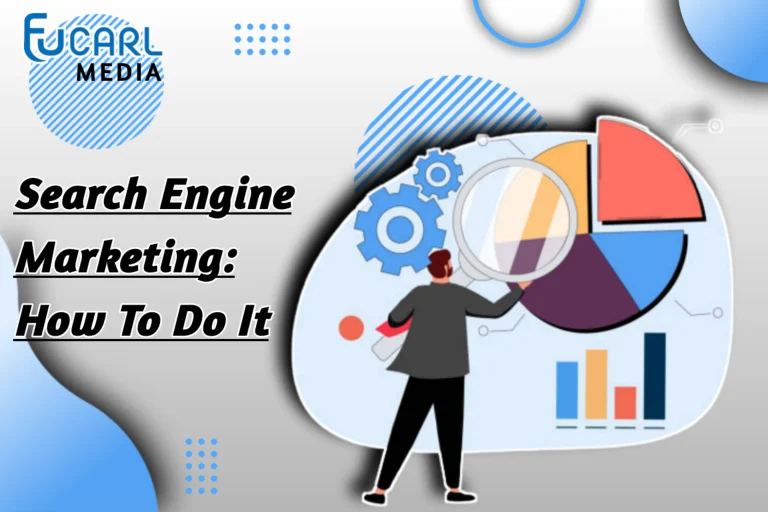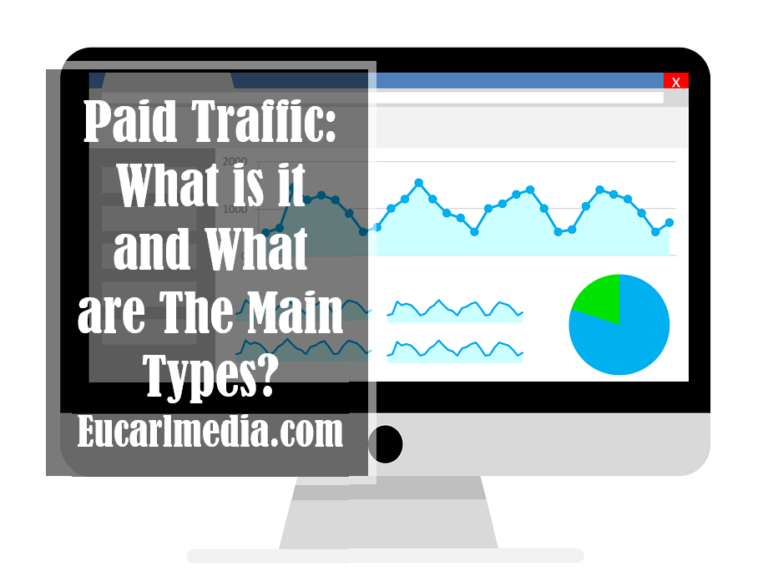What Is Pay-per-click? The Best Guide To PPC Marketing
Can I count on your honesty for once and ask you to rate, on a scale from one to ten, how well you comprehend pay-per-click and other paid advertising strategies?
Pay-per-click is still a confusing topic for many people, even though research has shown that more than half of small businesses use some kind of advertising.
Pay-per-click, or PPC, is an important marketing strategy that you, as an online marketer, need to know about. It will help you understand how paid advertising works and will be of great use to you.
You, on the other hand, don’t need to worry about anything else because this essay was written specifically for you. This guide will teach you everything you need to know to get started with PPC advertising.
Keep an eye out!
What Is Pay-per-click (PPC)?
PPC advertising is a specialized form of marketing strategy that demands you to pay a certain sum of cash in exchange for the privilege of having your website appear toward the top of search engine results pages (SERPs).
There is a connection between this and the search engine marketing (SEM) approach that we previously talked about, but the two are not precisely the same. This will eventually get us to the subject of SEM Vs PPC.
However, the amount of money you are paid for pay-per-click (PPC) advertising is directly proportional to the number of times users and potential customers click on the ad that is already being displayed.
If you use this PPC service appropriately, you may end up with high-quality leads, which could eventually result in a big return on investment (ROI) for your firm while it generates profits.
This type of pay-per-click (PPC) advertising can be used not only in search engines like Google and Bing but also on social media platforms like Facebook.
Everything is done with the single objective of bringing high-quality leads back to a specific website. On the other hand, this is the complete antithesis of search engine optimization (SEO), which only uses organic methods.
What is an example of PPC? When utilizing search engines, the results that display to the right and to the front of the results for organic searches are examples of pay-per-click advertisements.
PPC Terms And Definitions
As usual, you can’t fully understand the ideas behind all these different types of search engine marketing without first learning a few terms and what they mean in a simple way.
If you want to focus on one of these paid advertising models, like that of the pay-per-click model, you need to know some of the terms and definitions that go along with it.
Let’s go! Pay-per-click (PPC) advertising can be broken down into its parts, which will be talked about in the following paragraph in order of importance and frequency of use.
Search Engine Marketing (SEM)

This is where the debate over SEM Vs PPC comes into play because the two are inextricably linked. Any form of digital marketing carried out by search engines like Google is referred to as search engine marketing (SEM).
The term “search engine marketing” (SEM) refers to both paid forms of advertising, such as pay-per-click, and unpaid forms of advertising, such as the SEO program, which is focused on keyword usage.
These keyword usages are the essential factors that draw users to the ad, whether they type it into social media or into search engines with the intention of getting a result. This holds true regardless of where the user is looking for information.
Cost-per-click (CPC)
The cost per click, or CPC, is an essential term that is most frequently used when talking about PPC advertising. This is because CPC refers to the amount that an advertiser must pay for each click that is made on his advertisement.
Because cost-per-click is also a factor in where your ad will be shown, a higher amount of sponsored traffic will directly lead to a better placement of your ad and more online visibility.
Because of this, an ad with a higher estimated rate of payment will invariably result in a greater click-through rate (CTR). This is because the advertisement has recently been bolstered in order to reach a greater number of clients.
However, you could still be able to modify your CPC so that it results in a payment that is within your financial means. Following is a collection of formulas that will be used to calculate your next payment:
Actual CPC: Competitor’s Ad Rank / Quality Score
Cost Per Mille (CPM)
Another essential term used in pay-per-click advertising is the cost per mile (CPM), which is often referred to as the cost per thousand. “Cost per one thousand impressions” is the literal translation of this phrase.
When PPC advertising is employed in paid social ads or display ads, this word is most commonly used. Because of this, most of the ways they can be used are in transactional social media marketing.
However, there are other sorts of cost-per-mile, such as cost-per-engagement, which can also be used. However, for the time being, we will just talk about advertising using the CPC model.
Landing Page

In a comparison of SEM Vs PPC advertising, the landing page is a component that is shared by both tactics. This is the page where users will land after clicking on your PPC advertising.
This could be a landing page, a thank-you page, or any other type of page designed just for it. To name just a few possibilities, it may be your business website, your homepage, a social media area, or even an online marketing store. These are just some of the possibilities.
It is essential to create a landing page with great care and in a professional manner. In addition, it is critical to ensure that the page is created in accordance with the landing page’s best practices.
The Best Pay-per-click Platforms
The next key question is, “Where should I advertise?” Now that we have done justice to the “pay-per-click definition” and other relevant information linked to PPC, the next crucial question is, “PPC ad platform”.
Now that we’ve gotten that out of the way, I need to let you know that there are dozens of websites where you may safely, effectively, and without much anxiety practice your PPC advertising.
However, it is important to keep in mind that the most effective method for practicing PPC is to have an in-depth grasp of the pace at which your ROI comes from the platforms on which you advertise.
When selecting a platform, there are a few more aspects besides its user-friendliness and traffic volume that should be taken into account. These aspects include the platform’s level of security.
You will find a list of the best-rated platforms that allow you to properly practice pay-per-click advertising and produce a higher return on investment (ROI) below.
Google Ads (Formerly Known As AdWords)
When it comes to paid advertising, pay-per-click is unrivaled as the most effective strategy. Since Google Ads are also utilized for search engine marketing, they continue to be considered a common platform when comparing PPC advertising to search engine marketing.
According to recent research, Google processes more than 90,000 search requests every second, providing it an advantage over competing PPC advertising platforms in terms of its ability to bring in more website visitors.
So, because of this, you will have a better chance of being able to target the words in your ad, which will allow you to make more money from a larger number of people clicking on your ad.
Professionals and other experts in other fields who know how important Google Ads is, like the best SEO companies in the world, usually use Google Ads as their main advertising platform.
Facebook Ads

When it comes to pay-per-click advertising, another platform that has a lot of popularity is Facebook. They have millions of users, which makes their platform the perfect place for you to put up ads for your business.
The ability of advertisers to target keywords according to the demographics, interests, and geography of their audience is another advantage that comes with using Facebook advertisements.
Facebook also lets you do native advertising, which means you can still send your ads to or put them on other social media sites you use to get more people to click on them for more revenue.
AdRoll
This particular AdRoll also has pay-per-click advertising services, but its main focus is on re-targeting your keywords to groups of consumers who are likely to be interested in the ads.
Take, for instance, a user who is reading your post about investing in real estate as an example. You are now able to re-target them on other websites, perhaps ones that deal with a topic that is connected to the niche that you operate in.
You will have the opportunity to re-target your advertisements to social media platforms in addition to websites if you use pay-per-click (PPC) advertising with AdRoll, which is another advantage of utilizing this method of marketing.
Read Also: Metadata Meaning: Discover How It Helps SEO
Pay-per-click Advertising Benefits
You will be able to recognize and appreciate the benefits of adopting pay-per-click (PPC) advertising into your business once you have a solid understanding of how the PPC advertising mode is operated.
There are several advantages to using PPC advertising, in addition to the fact that you have the unrestricted freedom to decide how much money to spend and only have to fork over money when people click on your advertisements.
1. Being Able To Keep Track Of Your Progress
Pay-per-click advertising makes it possible for advertisers to track both their performance and the goals they’ve set for themselves when using this advertising mode.
Since you can be delivering services, selling products, or advertising your brands, your primary objective might be to bring in potential customers so that you can make sales.
So, being able to track your goal and performance will not only let you know how well your ad is working in real time, but it will also tell you what needs to be changed.
2. Gain Quick Exposure
When you engage in PPC ads, you might acquire visibility on the Internet more quickly. Because ad platforms approve advertising so quickly, this indicates that your content will have an easier time reaching your audience quickly.
This might be text or material that appears in a Google search, an image ad that appears on Instagram, or even a small video ad that is displayed on YouTube. Your visibility will improve as a result of these many platforms.
However, if you are still uncertain about how you could begin using pay-per-click advertising, you could hire an SEO expert that knows in-depth knowledge of SEO to handle and monitor your PPC ads.
3. Reach Your Intended Audience

PPC advertising not only helps you reach an audience, but it also gives you the chance to reach a targeted and precise audience within a particular niche. This allows you to promote your business more to potential customers.
You will also be able to reach out to members of an audience who are interested in a particular service, in addition to targeting a particular demographic of people and an age range within that demographic.
For instance, if you want to reach people who are in their late 40s, you can use pay-per-click (PPC) advertising to automatically target those people with the contents of your advertisement.
What Benefits Can PPC And SEM Provide for Your Company?
When comparing SEM and PPC, search engine optimization (SEM) will provide organic traffic to your marketing strategy, while pay-per-click advertising will make it simple to have your company’s ads appear at the top of the search engine results page (SERP).
However, you should still include pay-per-click and search engine optimization in your Internet advertising approach. PPC advertising is a fast way to build an audience, but search engine optimization helps to keep that audience coming back.
That ought to be sufficient for the time being! Tell us about any challenges you’ve come across while working with PPC advertising, as is customary at this point. Make your voice heard by expressing your thoughts in the comment section.


